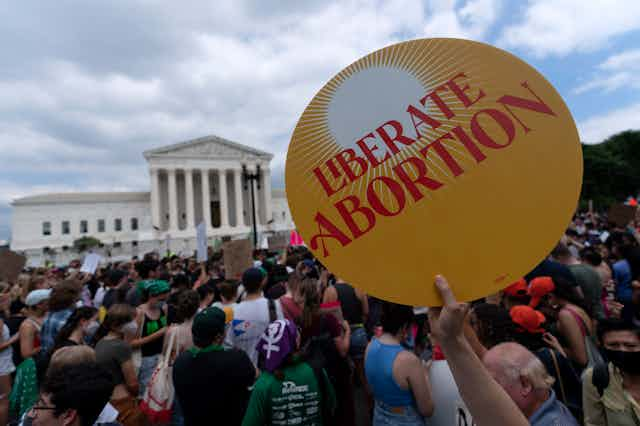Nearly two months have passed since the Supreme Court of the United States returned its judgment in Dobbs v. Jackson Women’s Health Organization — the now infamous decision that reversed half a century of established law on a woman’s right to abortion.
The majority opinion in Dobbs is rife with contradictions and questionable legal reasoning. The material harm that many women will suffer as a consequence is undeniable.
But from a constitutional perspective, the theory the court used to arrive at its judgment poses the gravest danger.
Originalism vs living constitutionalism
Constitutional scholars have long been charting the Supreme Court’s transition away from a living reading of the U.S. Constitution toward an originalist one.
Those who subscribe to an originalist reading of the Constitution believe that courts act illegitimately wherever they try to creatively apply its provisions to modern times. Since it would be undemocratic for an unelected judiciary to “invent” the law, courts must limit themselves to the retrieval of constitutional principles from the text of the Constitution itself.
Read more: What is originalism? Debunking the myths
Living constitution theorists defend the opposite perspective. Since much of the U.S. Constitution was written more than 200 years ago, they argue that binding the current generation to the intentions of its drafters not only undermines the sovereignty of the people living today but impedes any progress the nation has made throughout its history.
It’s along these fault lines that the majority and dissenting opinions in Dobbs took shape.
According to the majority of Supreme Court justices, “constitutional analysis must begin with ‘the language of the instrument,’ which offers a ‘fixed standard’ for ascertaining what our founding document means.” And because “the Constitution makes no reference to abortion,” they argued, any claim that the document confers a right to it must be rejected.
The dissenting justices took the opposite tack. They acknowledged that “those responsible for the original Constitution… did not perceive women as equals, and [therefore] did not recognize women’s rights” — but added that this alone doesn’t invalidate the constitutionality of a right to abortion. The right to abortion, they argued, is a product of the country’s constitutional history.

How rights develop over time
Originalists have a point on one front — it would be illegitimate for a court to simply concoct a right out of thin air. But to suggest this is what courts do when they interpret a country’s constitution misrepresents how rights develop over time.
Constitutions are not made up of a random collection of rules. They have integrity. Ideally, the different parts of a constitution will work to reinforce its other parts, rendering a complete vision that a nation can consult as it charts a course into the future.
From the start, the U.S. Constitution was organized around two core principles: liberty and equality. These represented the defining ideals for the country. From these ideals, certain commitments followed.
Consider the 1954 Supreme Court decision on Brown v. Board of Education to reverse an earlier judgment affirming the constitutionality of the separate-but-equal doctrine — the legal mechanism that segregated white and Black schoolchildren in many parts of the United States throughout the first half of the 20th century.

The reasoning the court used in the Brown decision didn’t revolve around the moral wickedness of the doctrine itself — though wicked it surely was. Instead it focused on the constitutional commitments the United States had acquired over time.
In essence, the court explained that the nation could not simultaneously tolerate the separate-but-equal treatment of a certain section of its population while maintaining a commitment to the principle of equality. The two things were irreconcilable.
The constitutional commitments of a nation ensure rights once unrecognized can become recognized at a particular moment in time. Through the piecemeal advances that are made in any area of law, a country’s constitutional commitments are revealed and evolve. The role of Supreme Courts is merely to ensure those commitments are reflected in the laws by which people are governed.
Dobbs dissent
From a constitutional perspective, the dissenting justices in Dobbs were correct.
Not only is the right to abortion a recognized right in the U.S. Constitution, it is deeply embedded in its fabric. To deny a woman the right to choose in an area so intimate to her, concerning a choice that carries such profound consequences over her life, is to deny her status as a free and equal person. Nothing could be further from the core constitutional commitments of the United States.
A country that turns its back on these commitments — liberty and equality, in the case of the United States — is at risk of losing its vision. And without a vision, even the most basic terms of the social contract begin to dissolve.
The constitutional legacy of Dobbs is that it has brought America one step closer to this kind of social collapse.

